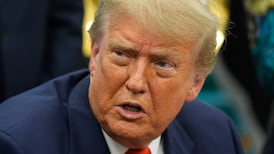A sensible and historically successful approach to investing begins with the belief that every asset has an intrinsic value. Before investing in an asset, the challenge is to apply some valuation or series of valuation approaches, to estimating its intrinsic value. Only then can a decision be made as to whether this value is sufficiently attractive relative to its market price to warrant an investment.
In the words of the most successful practitioner of such an approach, Warren Buffett, to the shareholders of his company Berkshire Hathaway in 1999: "Intrinsic value can be defined simply: it is the discounted value of the cash that can be taken out of a business during its remaining life."
A crucial implicit assumption however is that both the intrinsic value and the market price of the asset are denoted in something which itself will retain value.
Whether this is a psychological attachment to some half- remembered ‘gold standard’ or a questionable belief in the commitment of some ‘sovereign’ to ‘sound money’, this assumption of a stable unit of account and store of value, ie, of stable money is one that deserves more attention.
Briefly considering history suggests that assuming a sustainable anchor or intrinsic value has been both naive and expensive. While there may be no definitive or catch-all solution to this problem, in this era of unconventional monetary experiment I think giving it a little more thought is timely.
The fall of the Roman Empire in 476AD is one of the most widely debated events in history. Among a myriad of contributing causes, the progressive debasement of the coinage and the eventual collapse of the money economy arguably played a central role in plunging much of Europe into the Dark Ages.
The purity and weight – ie, the intrinsic value of the silver denarius – had been sacrosanct to Romans for centuries. As a unit of account, a means of exchange and a store of value, it is credited by many with playing a key role in the monetary stability and economic success of the greatest Empire the world had ever known.
This began to change in 64AD following the great fire which destroyed much of the eternal city.
Rather than raise taxes to fund the massive re-building work, the Emperor Nero chose to scale back the purity and weight of the silver denarius. The long journey of progressive debasement had begun.
By 270AD the silver denarius had been debased to the point that it contained just 0.02 per cent of silver; it had been debased to just 0.02 per cent of its intrinsic value. This progressive undermining of the value of the coinage produced a progressive decline in its purchasing power.
By the end of the third century, confidence in the denarius had all but evaporated. The destruction of the middle-class and their savings had brought the Empire to the brink of civil breakdown. The attempt by the emperor to stabilise the economy by rebasing the denarius to close to its intrinsic value proved a jolting failure as the lack of silver caused trade and activity to contract sharply.
Falling tax revenues eventually forced direct state appropriation of cattle and food and the consequent abandonment of land. The progressive collapse of the money economy intensified the fracturing of the weakening Empire before it ultimately succumbed to the Barbarian onslaught.
Monetary history since the final sacking of Rome has continued to be characterised by regular upheavals. Periods of gold or other intrinsic standards have gyrated or sometimes co-existed with periods of credit or state money systems.
For many investors valuing an asset, the implicit assumption that the assessed intrinsic value and its market price are denoted in something which itself will retain value has proven to be a consistent and costly error.
More importantly for the investor today, the modern monetary regime which is barely four decades old and is currently in a state of unconventional experiment, is as unanchored and potentially unstable as any in history.
While there may be no obvious solution to this problem, it may be worth pondering the words of Federal Reserve Bank of Philadelphia president Charles Plosser in a recent reference to fed policy: "I think many people – myself included – are beginning to worry about the consequences of how we unwind ourselves from all this stuff . . . It's not because that we know what's going to happen. It's because unintended consequences or the build- up of risks can be very important. I think we have to balance, not just the risks in the economy, but our own risks that we're creating down the road."
I think many Roman citizens would have understood his concerns in the middle of fifth century.
John Looby is an investment manager at Setanta Asset Management, a global value manager based in Dublin. The views expressed are personal and do not necessarily reflect the views of his employer











